
The Habitat / Species Management Area of Tronqueira and Planalto dos Graminhais is located on the eastern part of São Miguel, the oldest part of the island, and covers an area of 5373,30ha. The hilly and eroded relief is crossed by torrential or permanent rivers, notably Ribeira do Guilherme, which have formed various gullies.
In this protected area we can highlight the plateau of Graminhais rising between 900 to 950m, north of the Povoação volcano.
In regards to important habitat, the Laurel Forest of Tronqueira and the forested peat lands of the plateau of Graminhais deserve special highlight.
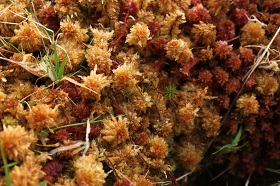
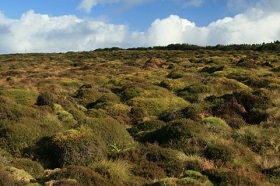
Concerning the local flora, the Laurel forest is noteworthy for the abundance of lauraceous species, i.e. glabrous or semi glabrous (hairless) coriaceous tree species with large perennial leaves, such as the Azorean Laurel (Laurus azorica), Azorean Juniper (Juniperus brevifolia), Portugal Laurel (Prunus azorica), Faya Tree (Morella faya), Azorean Heather (Erica azorica), Azorean Blueberry (Vaccinium cylindraceum), Lauristinus (Viburnum treleasei), Myrsine retusa, Picconia azorica and Azorean Holly (Ilex perado spp. azorica).
Forested peat lands have a rather different floristic composition, due to their specific soil characteristics, namely low pH and continuous waterlogging throughout the year. Among the species are Festuca francoi, Holcus rigidus, Reeds (Juncus effusus), Polytrichum commune and peat moss (Sphagnum sp.). The tree species are mostly Azorean Heather (Erica azorica), Azorean Blueberry (Vaccinium cylindraceum) and Azorean Juniper (Juniperus brevifolia).
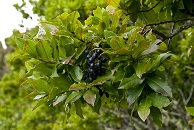
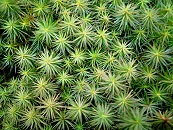

Relatively to fauna, special highlight is given to the Azores Bullfinch or Priolo (Pyrrhula murina), an endemic bird to the Azores. Once common in the eastern part of São Miguel, it gradually became a threat for the orange production and was hunted to the point the population was reduced to about 200 individuals. However, the main reason for this populational decrease was the degradation of the species’ habitat, the Azorean Laurel Forest. Nowadays, thanks to the conservation efforts developed by two LIFE projects (LIFE Priolo and LIFE Sustainable Laurel Forest), aiming to rehabilitate the natural habitat, the conservation status of the Azores Bullfinch has improved and today there are around 1 000 individuals.
Conservation actions have been developed in this area since 2003. These actions include ecological restoration of more than 250ha, notably through the eradication of invasive flora species and reforestation of Azorean native species. Also, near 100ha of peat lands were recovered in the plateau of Graminhais through the closing of drain ditches and recovering of the original hydrological regime, eradication of exotic species and building of elevated walkways to avoid trampling. These intervention areas can be observed along the road of Tronqueira and in the walking trails towards Pico da Vara, allowing to better understanding the ongoing conservation actions and working as a living laboratory for biodiversity conservation.
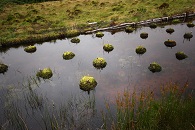
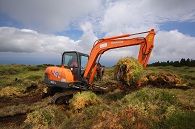
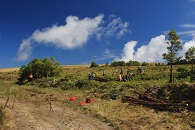
The Habitat / Species Management Area of Tronqueira and Planalto dos Graminhais includes a Special Protection Area (SPA), Pico da Vara/ Ribeira do Guilherme, included in the Natura 2000 Network and the CORINE Biotope Project.
This area is crossed by two official trails, that lead to the summit of Pico da Vara, namely PR7SMI – Algarvia Pico da Vara and PR23SMI Povoação Pico da Vara, which provide a panorama over the entire classified area as well as of the Natural Reserve of Pico da Vara.
More information about this protected area | Click here
< Previous page